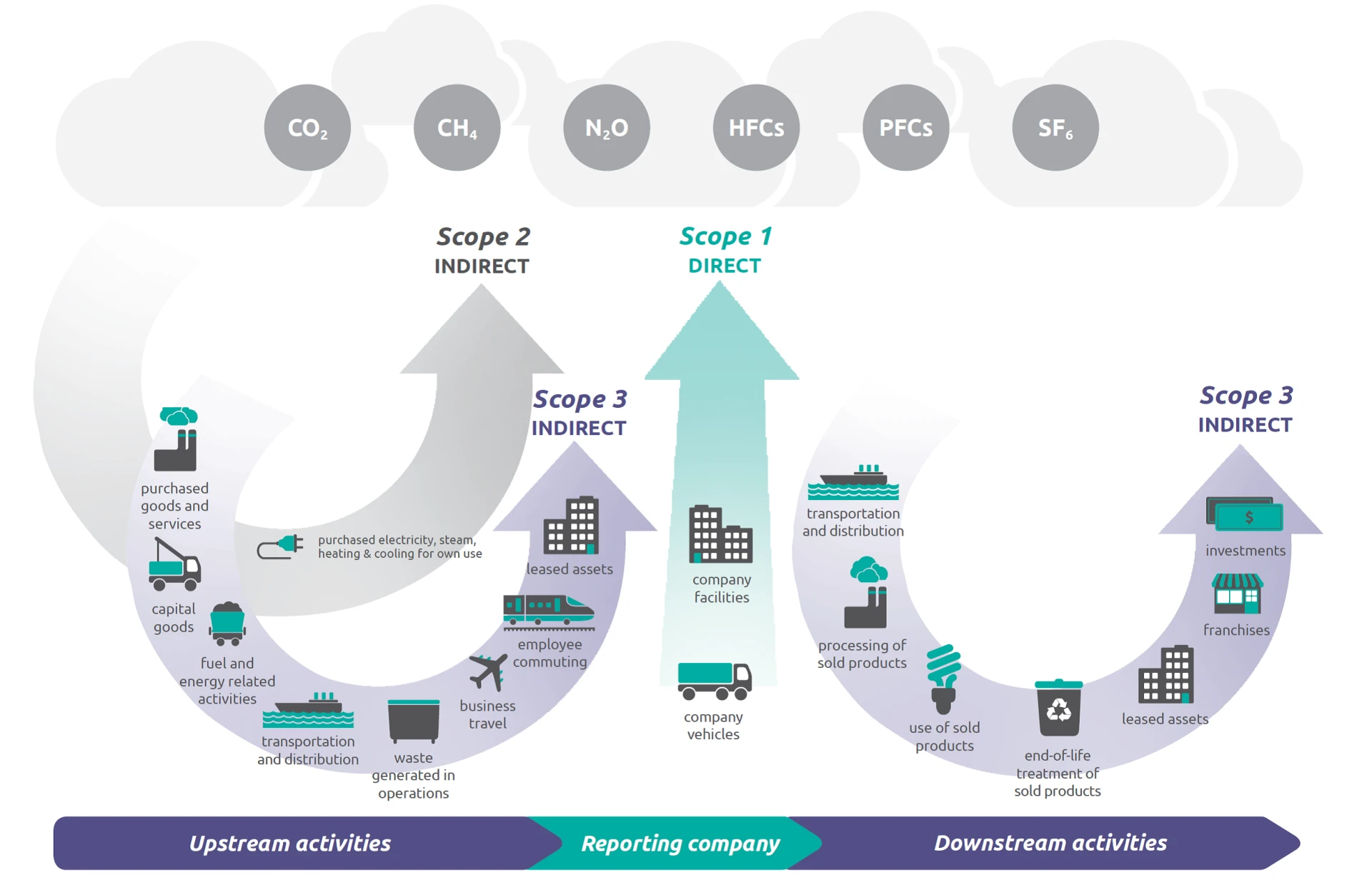The 2015 Paris Agreement calls for a significant reduction in carbon emissions by 2030. To achieve this goal, understanding and categorizing carbon emissions is essential. In order to take action to reduce emissions, we need to understand and measure their sources in the first place. The three scopes are a way of categorizing emissions a company creates in its operations.
In this article, we will explore the three scopes of emissions.
What are the Scopes of Emissions?
Scope 1 emissions:
Scope 1 emissions are the direct emissions stemming from sources owned or controlled by the organization, such as burning fuels for company vehicles (if they’re not electrically powered).
Scope 2 emissions:
Scope 2 emissions are the emissions that a company causes indirectly and come from where the energy it purchases and uses is produced. For example, the emissions caused when generating the electricity that we use in our buildings would fall into this category.
Scope 3 emissions:
Scope 3 emissions are the indirect emissions throughout the entire value chain, including upstream suppliers and downstream customer activities. It encompasses emissions that are not produced by the company itself and are not the result of activities from assets owned or controlled by them, but by those that it’s indirectly responsible for up and down its value chain. An example of this is when we buy, use and dispose of products from suppliers. Emissions from scope 3 are the trickiest. They are all the other indirect emissions within your entire value chain including the upstream supply chain (suppliers), as well as downstream GHG emissions (e.g. from customer usage).
For many organizations, scope 3 emissions provide a dominant impact category (up to 80% of the total footprint).

How easy is it to track and reduce scope 1, 2 and 3 emissions?
It’s somewhat easier to quantify emissions for scopes 1 and 2. There are of course lots of considerations beyond emissions alone – such as cost and practicality – but, to an extent, we can measure whether our operations are low emissions, how we warm our buildings and ways to reduce the carbon cost of production processes.
However, for many organizations, scope 3 emissions account for by far the highest proportion of total emissions. Unfortunately, these are also usually the hardest to analyze and reduce. For example, a soft drinks maker can’t control how we will dispose of its plastic bottles, nor can an appliance manufacturer decree whether we use the most or least eco-friendly settings on our laundry machines.
Understanding carbon emissions and their categorization is crucial Understanding these scopes plays a pivotal role in an organization’s efforts to reduce its carbon footprint. By identifying and addressing the different categories of emissions, organizations can take effective steps to fulfill their environmental responsibilities.
Resources
Emission calculation tools built by GHG Protocol
Calculation and accounting tools built-on in conformance with GHG Protocol standards
Technical Guidance for Calculating Corporate Scope 3 Emissions (.pdf)







